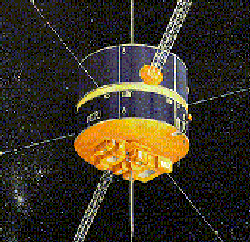Close-Up of Colliding Magnetic Fields

At the region where magnetic fields from the Sun and Earth meet, field lines buckle, break, and snap together again, powering dramatic events like auroras in the process. Theorists have begun to understand this mysterious region, known as the magnetopause, but have yet to observe it up close. Now, in the 1 July print issue of PRL, a group reports the results of the closest encounter yet between a space probe and the central magnetopause. The data mostly confirm existing theory, but also hint at new phenomena. Researchers expect the observations will herald a new phase in their understanding of astrophysical magnetic fields.
Solar wind particles ride on the Sun’s magnetic field lines as they waft outward from the star. Where the Sun’s field bumps up against the Earth’s magnetosphere, a process called reconnection constantly melds the two fields together as the Earth moves in its orbit. Field lines break and reconfigure, and according to theory, positive ions diffuse in this region, rather than remaining attached to magnetic field lines as they do elsewhere. In a narrow region at the center of the magnetopause, high-pressure electrons should also diffuse and eject upwards and downwards, propelled by a combination of like-charge (Coulomb) repulsion and the energy acquired from the reconnection process.
The magnetopause’s particle flows generate complex electric and magnetic fields, but until recently, even space-based studies could not resolve the central region well, says Forrest Mozer of the University of California at Berkeley. Then in April of last year the Polar spacecraft crossed the magnetopause near its central, most active region by chance, giving Mozer and his colleagues a closer look. The electric and magnetic fields the probe measured built up a more detailed picture of the magnetopause, including the flow of electrons in the diffusion region. That’s where the surprise came in: some of the electrons were moving toward the central magnetopause where they were expected to form a jet aimed away from it.
“The theory is not predicting anything like that,” says James Drake of the University of Maryland. He adds that seeing the diffusing electrons for the first time indicates “you’re at the point where the magnetic field line is changing topology, and so that’s kind of exciting.” But there are a few measurements for future experiments to tighten up, he says, including those of the sizes of the flows and the rate of reconnection.
Some of these features may come into sharper focus with the proposed Magnetospheric MultiScale mission, a cluster of four satellites that would launch in 2006. The current result, says Mozer, is just a taste of what may lie ahead for a branch of physics that can’t be studied anywhere else. “The next generation of instruments to measure these particles is going to reveal a whole new realm of physics,” he predicts.
–JR Minkel
JR Minkel is a freelance science writer in New York City.


